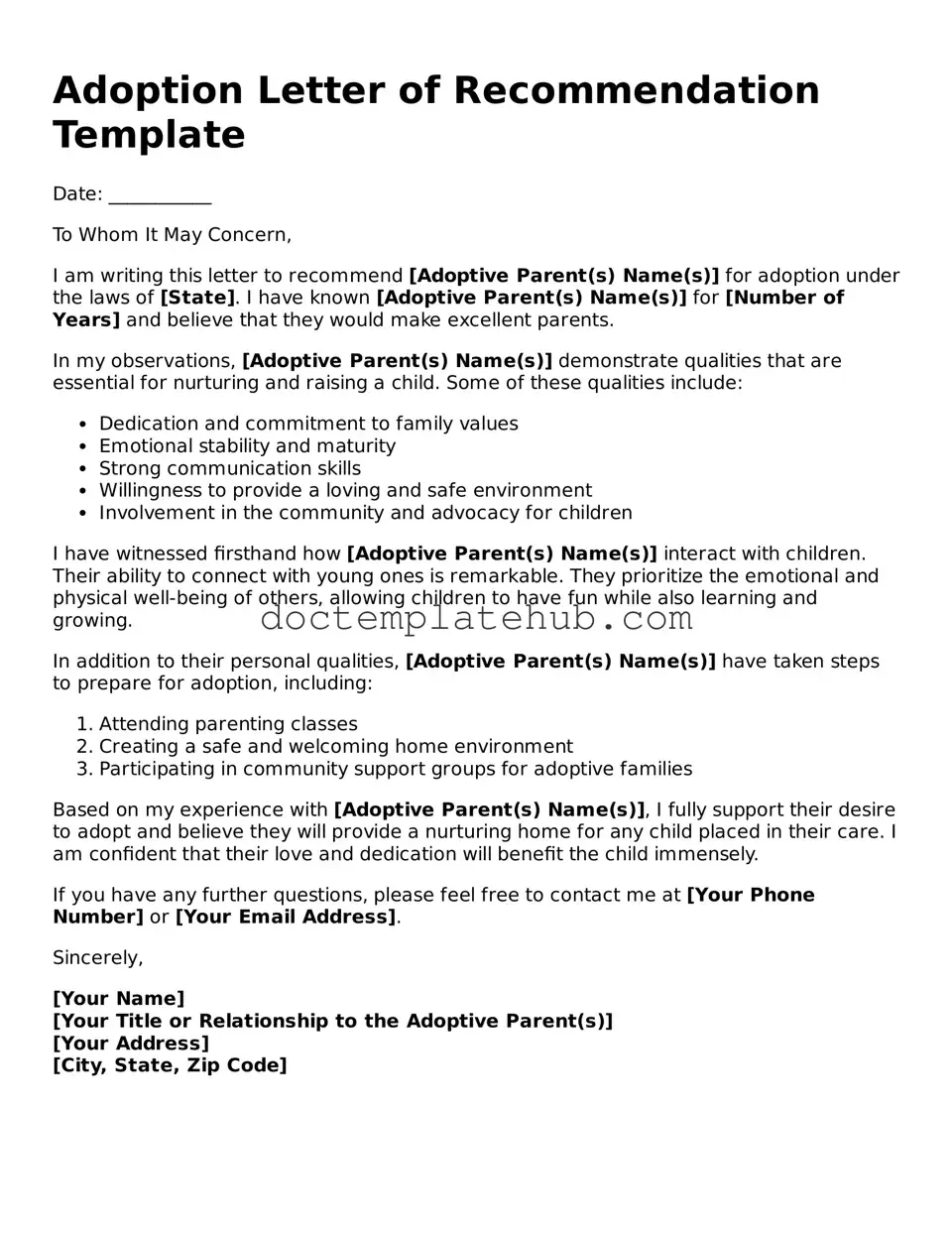What is an Adoption Letter of Recommendation?
An Adoption Letter of Recommendation is a document that supports an individual or couple's application to adopt a child. It is typically written by someone who knows the prospective adoptive parents well, such as a family member, friend, or professional, and highlights their qualities, parenting skills, and suitability for adoption.
Who should write the recommendation letter?
The letter should ideally come from someone who has a strong understanding of the prospective adoptive parents’ character and lifestyle. This could be a close friend, a family member, a teacher, a religious leader, or a coworker. The writer should be able to provide specific examples of the parents' nurturing abilities and commitment to family values.
What should be included in the letter?
The letter should include information about the writer's relationship with the prospective adoptive parents, specific examples of their parenting skills or qualities that make them suitable for adoption, and an overall positive endorsement of their ability to provide a loving home. It may also be helpful to mention the writer's own qualifications or experiences that lend credibility to their recommendation.
How long should the letter be?
While there is no strict length requirement, a well-crafted letter is typically one to two pages long. This length allows the writer to provide enough detail to convey their support while remaining concise and focused. Quality is more important than quantity; a thoughtful, detailed letter is more effective than a longer, less meaningful one.
Is there a specific format for the letter?
While there is no formal format required, the letter should generally start with a date and the writer's contact information. It should be addressed to the relevant adoption agency or court. The body of the letter should be organized and clearly state the writer’s relationship to the adoptive parents, followed by their observations and recommendations. A closing statement with the writer's signature is also important.
Can the letter be handwritten?
While a handwritten letter can add a personal touch, it is usually better to type the letter. Typed letters are easier to read and present a more professional appearance. If the writer chooses to handwrite the letter, they should ensure their handwriting is clear and legible.
How should the letter be submitted?
The method of submission can vary depending on the adoption agency or court requirements. Typically, the letter can be mailed, emailed, or submitted online. It’s important to check with the specific agency for their preferred submission method and any additional requirements they may have.
Can multiple letters of recommendation be submitted?
Yes, submitting multiple letters of recommendation can strengthen an adoption application. Different perspectives can provide a well-rounded view of the prospective adoptive parents. However, it’s essential that each letter is unique and offers distinct insights rather than repeating the same information.
Is there a deadline for submitting the letter?
Deadlines for submitting the letter can vary based on the adoption agency or court. It’s crucial to check with the specific organization to ensure that the letter is submitted on time. Early submission is often advisable to avoid any last-minute issues.
What if the writer is not familiar with adoption processes?
It’s perfectly acceptable for the writer to be unfamiliar with adoption processes. The focus should be on their personal knowledge of the prospective adoptive parents. They can write from the heart, emphasizing the qualities that make the parents suitable for adoption. If needed, the writer can seek guidance from the adoptive parents on what to include in the letter.
